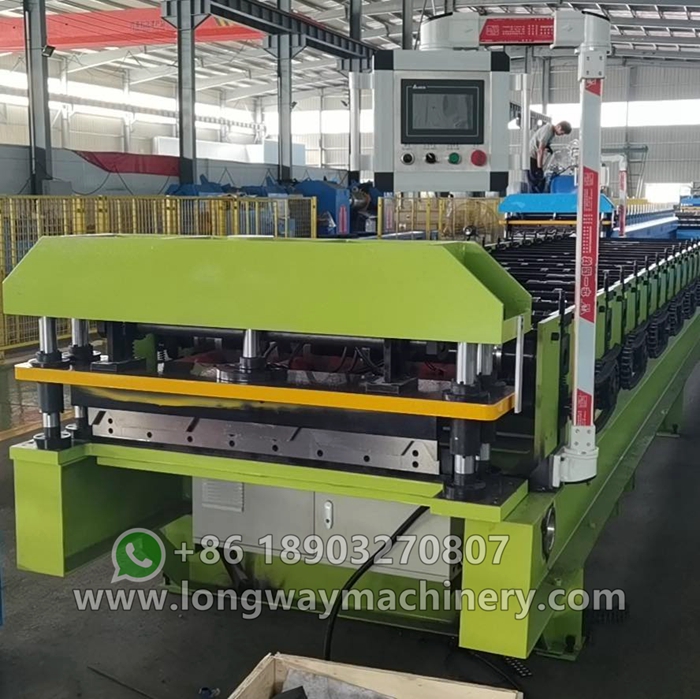Innovative Approaches to Enhance Efficiency in Rolling Forming Processes
Exploring Rollformers The Backbone of Modern Metal Fabrication
In the world of metal fabrication, rollformers stand out as essential machinery that streamlines the production of various metal profiles. Used extensively in industries ranging from construction to automotive, rollformers are designed to convert flat metal sheets into complex shapes through a continuous process. This article delves into the significance of rollformers, their operational mechanics, and their diverse applications in contemporary manufacturing.
What is a Rollformer?
A rollformer is a machine that employs a series of rollers to shape metal sheets into specific profiles. The process begins with feeding a flat strip of metal into the machine, which is then passed through multiple sets of rollers. Each roller gradually bends and shapes the metal until it reaches the desired profile.
The versatility of rollformers is paramount. They can create a plethora of cross-sectional shapes, including C-sections, U-channels, Z-shapes, and more. These profiles are essential components in various applications, from structural support in buildings to components in vehicles.
Operational Mechanics
The rollforming process involves several key stages. First, the metal sheet is uncoiled and fed into the rollformer. The machine’s rollers are arranged in a series, each designed to perform a specific bending operation. As the metal passes through each roller, it is incrementally bent, a process that can be finely tuned for precision.
Key aspects of the rollforming process include
1. Roll Design The shape and arrangement of the rollers are critical for determining the final profile. Rollers may be adjustable to accommodate different thicknesses and types of metal.
2. Speed Rollforming can be a high-speed process, allowing for increased productivity. Modern rollformers can operate at speeds exceeding 100 feet per minute, making them suitable for high-volume production.
rollformers

3. Automation Advanced rollformers are often equipped with automation features, including computer numerical control (CNC) systems. These enhancements allow manufacturers to easily switch between different profiles and improve precision in measurements.
Applications of Rollforming
The applications of rollformers are extensive and varied. In the construction industry, rollformed steel is commonly used for roofing systems, wall studs, and metal decking. These components are known for their strength and lightweight properties, making them ideal for modern construction needs.
In the automotive sector, rollformed parts contribute to vehicle frames and body panels. The ability to create complex shapes with high precision ensures that manufacturers can produce components that meet stringent safety and performance standards.
Additionally, rollformers play a significant role in the production of HVAC (Heating, Ventilation, and Air Conditioning) systems. Ductwork, which often requires specific shapes for air flow efficiency, can be easily fabricated using rollforming techniques.
Advantages of Rollforming
The advantages offered by rollformers are numerous. Notably, they provide a cost-effective solution for mass production with minimal material waste. The continuous nature of the process helps maximize material utilization, reducing overall production costs.
Moreover, rollformed products are characterized by excellent dimensional accuracy and strength. As the method allows for a highly controlled fabrication environment, the resulting components often require less finishing work and exhibit superior tolerances compared to other production methods.
Conclusion
In conclusion, rollformers are a cornerstone of modern metal fabrication, enabling a broad spectrum of industries to produce high-quality, cost-effective metal profiles. As technology continues to advance, the capabilities of rollformers will only enhance, paving the way for innovations in manufacturing processes. Understanding and utilizing rollformers effectively can help businesses remain competitive and responsive to the evolving demands of their respective industries. Whether in construction, automotive, or HVAC, the role of rollformers is undeniably pivotal and will continue to shape the future of metalworking.
-
Roof Panel Machines: Buying Guide, Types, and PricingNewsJul.04, 2025
-
Purlin Machines: Types, Features, and Pricing GuideNewsJul.04, 2025
-
Metal Embossing Machines: Types, Applications, and Buying GuideNewsJul.04, 2025
-
Gutter Machines: Features, Types, and Cost BreakdownNewsJul.04, 2025
-
Cut to Length Line: Overview, Equipment, and Buying GuideNewsJul.04, 2025
-
Auto Stacker: Features, Applications, and Cost BreakdownNewsJul.04, 2025
-
Top Drywall Profile Machine Models for SaleNewsJun.05, 2025








